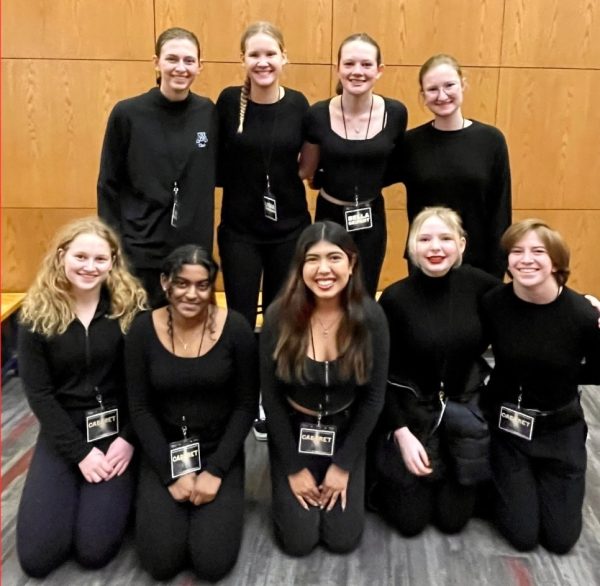The Long Process of Commiting to a College: Behind the Critical Decision
December 21, 2018
Minnetonka High School doesn’t lack athletic talent. In fact, we rank 9th for the best public school athletics in the nation, according to USA Today, and much of this talent continues after high school. Many athletes commit to a college for athletics, and some even go on to play in a professional league. “Signing a Letter of Intent” might be a phrase most Minnetonka students have heard thrown around a couple of times, but what does it really mean to be a student committing to a college for athletics?
A Letter of Intent is often confused with a verbal agreement, but the two are very different. While a verbal agreement is committing to a school, it isn’t binding like a Letter of Intent. Nevertheless, both can be very stressful and complicated.
Minnie Bittel, ‘19, just recently signed her Letter of Intent to play lacrosse at Northern Michigan University (NMU).
“The process of committing for everyone is different. In the case of women’s lacrosse, there is no specific way to be recruited,” says Bittel.
She said, “you can either join a club team and be seen on a recruiting tournament, have a connection at a school through a coach, or go to prospect camps. Of course, there are other ways, but those are the big three.”
Unfortunately this can be expensive, especially for lacrosse.
“It can cost a lot of money to join a club program and travel with them to tournaments where coaches will be recruiting. Our sport is even more unique because it is much more popular out east, and there aren’t as many schools with lacrosse in the Midwest. As a result, we have to fly to most tournaments to get our girls the exposure they need to get recruited,” says Taylor Tvedt, a coach for girls lacrosse at Augsburg University.
After receiving multiple offers, student athletes have to decide which school would be the best fit.
“Ultimately, I chose to go to NMU because it was the right school for me. I chose NMU for the school first because it was the right fit for me academically, geographically, and I loved the school culture.For women’s lacrosse, it’s important to think about if you were to get an injury or stop playing for any reason if you still would like student life at that school,” said Bittel.
Deciding on a school also means choosing which division one wants to participate in.
“As far as the division goes, we try to encourage our players to first look into the actual school before they rule out any team because of what division a lacrosse program is. Division can often just reflect the size and funding of a school more than it reflects the actual talent on the lacrosse team. There are many DIII teams that could beat DII or DI team, so an athlete’s recruiting process shouldn’t be based on division,” said Tvedt.
No matter what division an athlete signs into, playing a sport in college is very different than it is in high school, so deciding whether you want to play in college is another big decision.
“Playing lacrosse in college is like having a full-time job on top of being a full-time student. It’s not easy, but it’s worth it,” said Chloe Lewis, a freshman at Denver University. “Waking up at 6 am during the week for conditioning, then going to weightlifting followed by a practice that goes until about noon everyday, then continuing on to go to 2 or 3 classes until about 6 pm may not sound like an ideal ‘college lifestyle,’ but when you have 35 other girls who are like family to you it’s not that different anymore — it’s just a daily routine we all go through together.”
Overall, deciding to commit to a sport in college is not an easy job for athletes, but knowing that you’re going somewhere you’ll love makes it all worth it.


























